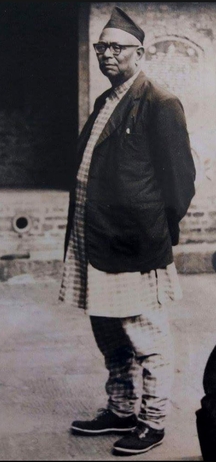
Mahananda Poudyal was an Indian writer, teacher, social worker and political thinker.
Hari Prasad Gorkha Rai was a well-known Indian Nagaland-based Nepali language writer. he was long associated, along with other writers at the time, with two major literary organizations Pashupati Sangh (1929) and Tarun Sangh (1930).

Krishna Chandra Singh Pradhan was a famous litterateur and critic of Nepal. He received the prestigious Madan Puraskar for Kavi Vyathit ra Kavya Sadhana, a literary criticism on Kedar Man Vyathit in 1958.

Indra Bahadur Rai was an Indian Nepali language writer and literary critic from Darjeeling, India. He wrote multiple essays, short stories, novels and criticism in his lifetime. Kheer and Raat Bhari Huri Chalyo are some of his most popular stories. He started a literary movement in Nepali literature known as Tesro Aayam with Ishwar Ballav and Bairagi Kainla. In 1977, he won the first ever Sahitya Akademi Award for Nepali language.
Ganga Prasad Pradhan was born on July 4, 1851, in Kathmandu and was the first ordained Nepali Christian pastor, main translator of the Nepali Bible, co-author of an English-Nepali dictionary and author of children's textbooks.

Balkrishna Shamsher Jang Bahadur Rana or Bala Krishna Sama was a Nepalese dramatist. For his great contributions to Nepali literature, he was awarded the title Natya Siromani. He is considered as one of the trimurti (trinity) of Nepali literature alongside Laxmi Prasad Devkota and Lekhnath Paudyal. He is often called the Shakespeare of Nepal.
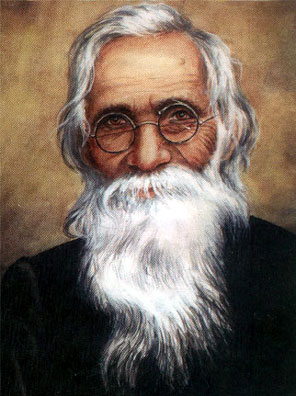
Lekhnath Paudyal is regarded as the founding father of modern Nepali poetry literature in the twentieth-century. His most important contribution is believed to be to the enrichment and refinement of the language rather than to its philosophical breadth. The best of Lekhnath's poems adhered to the old-fashioned conventions of Sanskrit poetics (kavya).
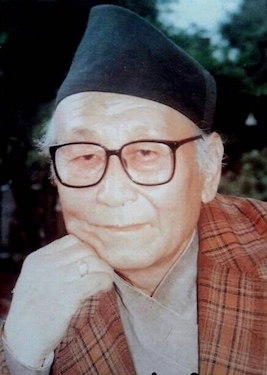
Shiva Kumar Rai (1919-1995) was a Nepali language writer and politician from Darjeeling, India. He won the Sahitya Akademi Award in 1978 for his collection of short stories Khaharey. He was the first Gorkha minister in the state of West Bengal after becoming a deputy minister in 1952.
Kumar Pradhan was an Indian historian and writer whose research interests include the History of the Eastern Himalayas, Genealogical studies and the Nepali literature. Pradhan has also edited and written a number of literary journals and anthologies and published learned articles in Nepali. He was the chief editor of Sunchari Samachar and other prominent Nepali newspapers.
Kedar Nath Gurung is an Indian educationist and writer of Nepalese literature, known for his satirical expressions. He was honored by the Government of India, in 2012, with the fourth highest Indian civilian award of Padma Shri.
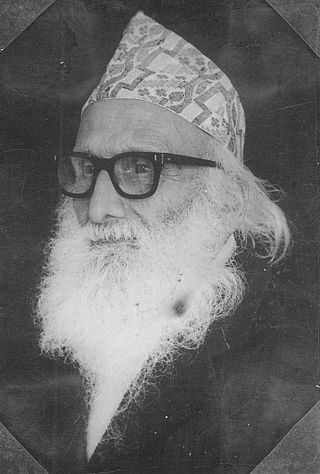
Dharanidhar Koirala was a Nepali poet sometimes known as Pandit-ji.

Surya Bikram Gyawali was a Nepali historian. He wrote biographies for numerous people including King Prithvi Narayan Shah and writer Bhanubhakta Acharya. Gyawali also served as a head teacher in Darjeeling. He is also a recipient of the Order of Gorkha Dakshina Bahu, the Order of Tri Shakti Patta, and the Tribhuvan Puraskar (1971).
Hridaya Chandra Singh Pradhan was a poet, writer and social worker of Nepal. He wrote against the ill customs and corruptions against the Rana regime.
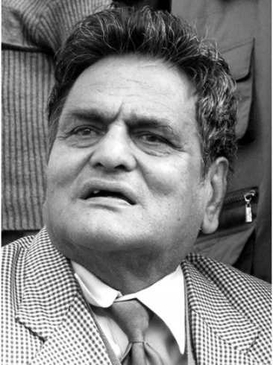
Bal Krishna Pokharel (1933–2019) was a Nepalese writer, linguist, historian, and literary critic. He was one of the key person behind the publishing of Nepali Brihat Sabdakosh, a comprehensive Nepali dictionary. Alongside Nepali language, he also wrote in Sanskrit and Magar languages. He wrote multiple fiction, non-fiction and poetry books and was awarded with Madan Puraskar in 1963 for his book Nepali Bhasa Ra Sahitya.

Chuda Mani Upadhaya Regmi is a Nepalese writer and linguist. He has published multiple books related to Nepali language.

Srasta ra Sahitya is a collection of essays by Uttam Kunwar. The book was published on 1966 by Sajha Prakashan. The essays are based on the writer's interview with thirty-five prominent Nepali writers, poets and litterateurs.

Sardar Rudra Raj Pande (1901–1987) was a Nepali educator, writer and historian. He served as the Headmaster of Durbar High School from 1925 to 1938, the Headmaster of Tri-Chandra College from 1938 to 1951 and the Vice Chancellor of Tribhuvan University from 1964 to 1969. He wrote multiple novels including Rupamati, which is considered as one of the earliest novels written in Nepali language. He also played an active role in establishing SLC examination board and Department of Archaeology.
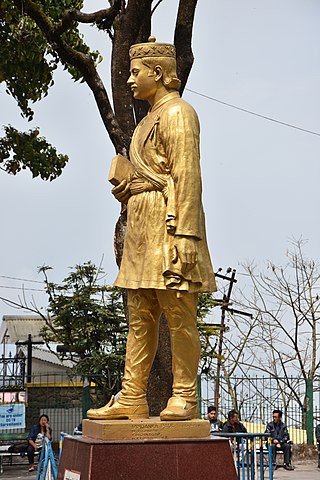
Nepali Sahitya Sammelan is an organisation dedicated to promotion of Nepali literature in India. It was formed on 25 May 1924 in Darjeeling, a Nepali speaking town in West Bengal state of India.

